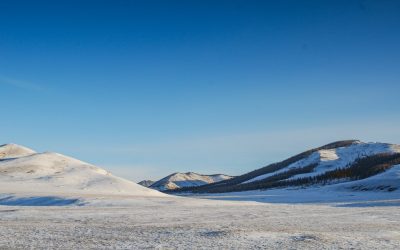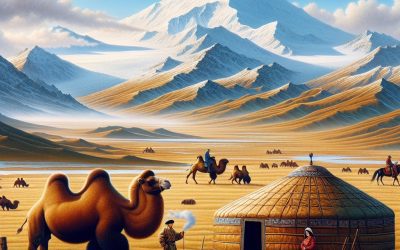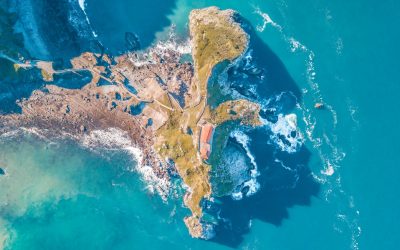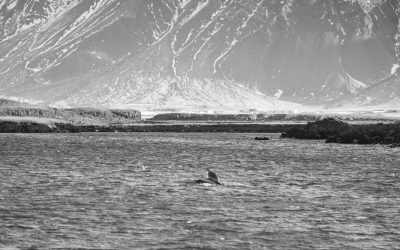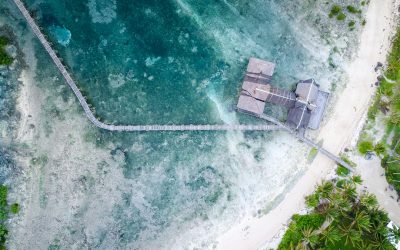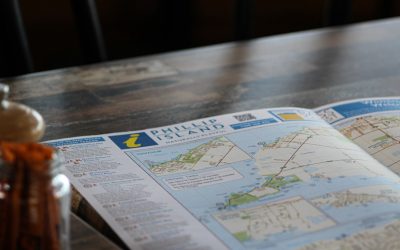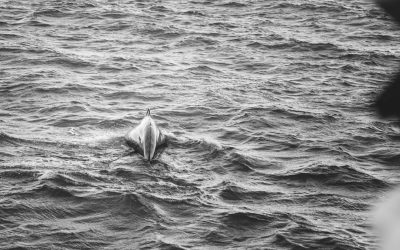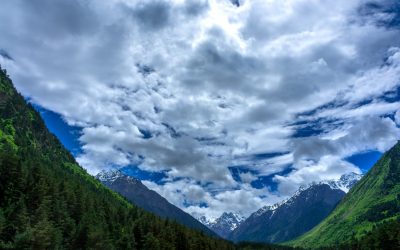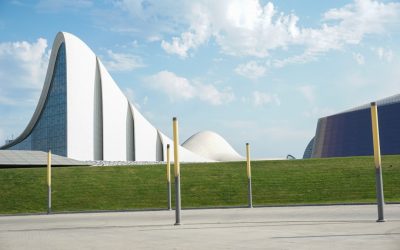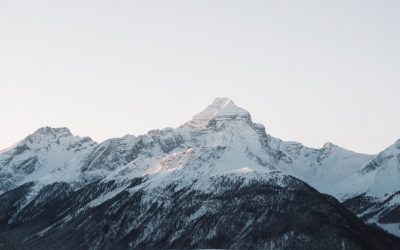World Geography
Geography is the study of the Earth’s landscapes, environments, and the relationships between people and their surroundings. It encompasses both the physical aspects of the Earth, such as its landforms, bodies of water, and climate, as well as the human aspects, including population distribution, cultures, and economies. World geography is a broad field that seeks to understand the complexities of our planet and how humans interact with it. By studying world geography, we can gain a deeper appreciation for the diversity of our planet and the interconnectedness of its various regions.
Geography is a multidisciplinary field that draws on elements of physical science, social science, and humanities. It involves the use of maps, spatial analysis, and geographic information systems (GIS) to understand the Earth’s surface and the processes that shape it. World geography also encompasses the study of human geography, which examines the ways in which people and their activities are distributed across the Earth. By understanding world geography, we can better appreciate the environmental, cultural, and economic challenges facing different regions of the world. This knowledge is crucial for addressing global issues such as climate change, resource management, and international development.
The Five Oceans and Seven Continents
The Earth’s surface is divided into five major oceans: the Pacific, Atlantic, Indian, Southern (or Antarctic), and Arctic Oceans. These vast bodies of water play a crucial role in regulating the Earth’s climate and supporting diverse marine ecosystems. The oceans also serve as important transportation routes and a source of food and other natural resources for human societies around the world.
In addition to the oceans, the Earth’s landmasses are divided into seven continents: Africa, Antarctica, Asia, Europe, North America, Australia (or Oceania), and South America. Each continent has its own unique physical and cultural characteristics, shaped by millions of years of geological processes and human history. From the deserts of Africa to the rainforests of South America, the continents offer a rich tapestry of landscapes and environments for exploration and study.
Major Mountain Ranges and Deserts
The Earth’s surface is also marked by major mountain ranges and deserts that have shaped the planet’s physical and cultural landscapes. The Himalayas, for example, are the highest mountain range in the world and are home to diverse ecosystems and cultures in countries such as India, Nepal, and Bhutan. The Andes in South America, the Rockies in North America, and the Alps in Europe are other prominent mountain ranges that have influenced human settlement patterns and economic activities.
Deserts cover about one-third of the Earth’s land surface and are characterized by low precipitation and extreme temperatures. The Sahara Desert in Africa is the largest hot desert in the world, while the Gobi Desert in Asia is one of the largest cold deserts. Deserts are not only home to unique flora and fauna but have also been important trade routes and cultural crossroads throughout history.
Climate Zones and Biomes
The Earth’s climate is influenced by a variety of factors, including latitude, altitude, ocean currents, and prevailing winds. As a result, the planet is divided into different climate zones, each with its own characteristic weather patterns and ecosystems. The equator, for example, experiences a tropical climate with high temperatures and heavy rainfall, while the polar regions have a cold and dry climate.
These climate zones give rise to different biomes, or large ecological areas characterized by distinct plant and animal communities. The tropical rainforest biome, found near the equator, is home to a diverse array of species and is vital for regulating the Earth’s climate. The grasslands biome, found in regions such as the African savannah and North American prairies, supports grazing animals and has been important for human agriculture throughout history.
Human Geography and Population Distribution
Human geography examines the ways in which people and their activities are distributed across the Earth’s surface. It encompasses topics such as population growth, migration patterns, urbanization, and cultural diversity. Understanding human geography is crucial for addressing global challenges such as poverty, inequality, and environmental degradation.
Population distribution is uneven across the world, with some regions experiencing rapid population growth while others are declining. The majority of the world’s population lives in Asia, particularly in countries such as China and India. Urban areas are also growing rapidly, with more than half of the world’s population now living in cities. This trend has significant implications for infrastructure development, resource management, and social inequality.
Historical and Cultural Geography
Historical geography examines how human activities have shaped the Earth’s landscapes over time. It explores topics such as colonialism, trade routes, and the rise and fall of empires. Cultural geography focuses on how human cultures have developed in different regions of the world and how they interact with their environments.
The Silk Road, for example, was an ancient trade route that connected China with Europe and facilitated the exchange of goods, ideas, and technologies across Eurasia. This historical trade route had a profound impact on the development of cultures and economies along its path. Similarly, cultural geographers study how different societies have adapted to their environments through practices such as agriculture, architecture, and religious beliefs.
The Importance of Geographic Knowledge
Geographic knowledge is crucial for addressing global challenges such as climate change, resource management, and international development. By understanding world geography, we can better appreciate the environmental, cultural, and economic challenges facing different regions of the world. This knowledge is crucial for addressing global issues such as climate change, resource management, and international development.
Geographic knowledge also helps us to understand our interconnectedness with other regions of the world. By studying world geography, we can gain a deeper appreciation for the diversity of our planet and the interconnectedness of its various regions. This understanding can foster a sense of global citizenship and empathy for people from different cultures and backgrounds.
In conclusion, world geography is a complex and multifaceted field that encompasses both physical and human aspects of the Earth’s landscapes. By studying world geography, we can gain a deeper appreciation for the diversity of our planet and the interconnectedness of its various regions. This knowledge is crucial for addressing global challenges such as climate change, resource management, and international development. It also helps us to understand our interconnectedness with other regions of the world and fosters a sense of global citizenship.
FAQs
What is world geography?
World geography is the study of the Earth’s landscapes, environments, and the relationships between people and their environments. It encompasses the physical features of the Earth, as well as the human activity that takes place on it.
Why is world geography important?
World geography is important because it helps us understand the world around us. It provides insights into the physical and human processes that shape our planet, and helps us make informed decisions about how to interact with our environment.
What are the main branches of world geography?
The main branches of world geography include physical geography, which focuses on the Earth’s natural features and processes, and human geography, which examines the relationships between people and their environments.
How does world geography impact our daily lives?
World geography impacts our daily lives in numerous ways, from influencing the weather and climate we experience, to shaping the availability of natural resources and influencing the distribution of populations and cultures around the world.
What are some key concepts in world geography?
Key concepts in world geography include location, place, human-environment interaction, movement, and region. These concepts help geographers understand and interpret the world around them.
Terrain and Topography of Mongolia: mountains, valleys, and plains.
Mongolia, a landlocked country in East Asia, is known for its vast and diverse terrain. From majestic mountains to expansive plains, Mongolia offers a wide range of natural wonders for visitors to explore. The country’s topography is characterized by rugged mountains, deep valleys, rolling plains, and dense forests. This article will provide an in-depth look at Mongolia’s terrain and topography, highlighting the unique features and attractions of each region. Summary Mongolia’s terrain and topography is diverse and unique. The majestic mountains of Mongolia offer breathtaking views and challenging hikes. Exploring the valleys of Mongolia reveals hidden gems and stunning landscapes. The vast plains of Mongolia are home to nomadic herders and their livestock. The Altai Mountains are a natural wonder of Mongolia, with snow-capped peaks and ancient petroglyphs. The Majestic Mountains of Mongolia Mongolia is home to several mountain ranges, each with its own distinct characteristics. The Altai Mountains, located in the western part of the country, are known for their snow-capped peaks and stunning alpine scenery. This range is a popular destination for outdoor enthusiasts, offering opportunities for hiking, mountaineering, and wildlife spotting. In the north, the Khangai Mountains dominate the landscape. These mountains are known for their lush green valleys and pristine lakes. The Khangai Mountains are an important cultural and historical site in Mongolia, with many ancient ruins and sacred sites scattered throughout the region. In the south, the Gobi Altai Mountains rise up from the Gobi Desert. This range is known for its unique rock formations and dramatic cliffs. The Gobi Altai Mountains are also home to several rare and endangered species, making it a...
Mongolia
Mongolia (Mongol Uls (Mongolia)) Capital: Pago Pago Population (Estimated July 2012): 68,061 Area: 200km2 or 77mi2 Currency: United States Dollar (U.S.$) Official Language: English; Samoan Political Information: Unincorporated and unorganized territory of the US Official Religion: No Official Religion (approximately 50% of the population is Christian Congregationalist, 20% are Roman Catholic and 30% are either protestant or have other religious beliefs) Highest Mountain: Lata Mountain at 964m or 3162 feet GDP Official Exchange Rate (OER is more precise at gauging a countries economic power) (Estimated 2005): $462.2 million (US$) or (GBP) GDP (OER) Per Capita (per member of the population estimated 2011): (US$) or (GBP) GDP Purchasing Power Parity (PPP is good for gauging living conditions and use of resources but not as accurate as OER. This data has been calculated based on the sum value of all goods and services produced in the country valued at prices prevailing in the United States) (Estimated 2007): $575.3 million (US$) or (GBP) GDP (PPP) Per Capita (per member of the population estimated 2007): $8,000 (US$) or (GBP) Time Zone (GMT/UTC): -11:00 Counties/Provinces/States: three districts and two islands at the second order; Eastern, Manu’a, Rose Island, Swains Island, Western Leaders: President Donald Trump; Governor Togiola Tulafono Sources: CIA World Fact Book, Encyclopaedia Britannica. Mongolia, a landlocked country in Central Asia, is known for its vast landscapes, rich history, and unique culture. With a population of around 3 million people, Mongolia is one of the least densely populated countries in the world. It shares borders with Russia to the north and China to the south, east, and west. Geography and Climate...
Political Boundaries of The Bahamas: Provinces, Districts, or Historical Boundaries.
Political boundaries are defined as the lines that separate one political entity from another. In the case of The Bahamas, these boundaries are crucial for the governance of the country. They determine the jurisdiction of different levels of government, from the national level down to the local level. Political boundaries also play a role in defining the rights and responsibilities of citizens within those jurisdictions. The importance of political boundaries in governance cannot be overstated. They provide a framework for the distribution of power and resources, as well as for the implementation of policies and laws. Political boundaries help to establish order and structure within a country, allowing for effective administration and decision-making. Without clear and well-defined boundaries, there would be confusion and chaos, making it difficult for governments to function properly. Summary The Bahamas is divided into provinces and districts, each with its own unique history and significance. Political boundaries in The Bahamas have evolved over time, shaped by historical events and societal changes. The first political boundaries in The Bahamas were established in the late 18th century, and have since undergone significant changes. Political boundaries have a significant impact on Bahamian society, shaping governance and community identity. The future of political boundaries in The Bahamas remains uncertain, but their significance in governance and society is undeniable. The Bahamas Provinces: An Overview The Bahamas is divided into three provinces: New Providence, Grand Bahama, and the Family Islands. Each province has its own distinct characteristics and historical background. New Providence is the most populous province and is home to the capital city, Nassau. It is known for its vibrant...
Climate Zones of The Bahamas: Different Climate Regions Of The Bahamas
The Bahamas, located in the Atlantic Ocean, is an archipelago consisting of more than 700 islands and cays. Its location in the tropics gives it a warm and sunny climate throughout the year, making it a popular destination for tourists seeking sun, sand, and sea. However, it is important to understand the different climate zones within The Bahamas in order to effectively plan for tourism and agriculture. Understanding climate zones is crucial for tourism as it helps visitors know what to expect in terms of weather conditions during their stay. It also allows tourism operators to tailor their offerings based on the climate of a particular region. Similarly, for agriculture, knowing the climate zones helps farmers determine which crops are suitable for cultivation and when to plant and harvest them. Summary The Bahamas has two main climate zones: tropical marine and subtropical. The tropical marine climate is characterized by warm temperatures, high humidity, and frequent rainfall. The subtropical climate is cooler and drier, with less rainfall and more seasonal temperature variations. The dry season in The Bahamas is from November to April, with lower humidity and cooler temperatures. The wet season in The Bahamas is from May to October, with higher humidity and warmer temperatures. Tropical Marine Climate of The Bahamas The majority of The Bahamas experiences a tropical marine climate. This climate is characterized by warm temperatures throughout the year, with little seasonal variation. The average temperature ranges from 70°F (21°C) in winter to 86°F (30°C) in summer. The islands in this region also receive abundant rainfall, with an average annual precipitation of 40-60 inches. Regions such as...
Terrain and Topography of The Bahamas: mountains, valleys, and plains.
The Bahamas is a stunning archipelago located in the Atlantic Ocean, consisting of over 700 islands and cays. Its geography is diverse and unique, with a combination of mountain ranges, valleys, plains, plateaus, and blue holes. Understanding the terrain and topography of The Bahamas is crucial for various reasons, including tourism, ecosystem preservation, and climate change adaptation. In this article, we will explore the different topographical features of The Bahamas and their significance. Summary The Bahamas is an archipelago made up of over 700 islands and cays. The highest point in The Bahamas is only 63 meters above sea level. The Great Bahama Bank is a vast plain that covers over half of the country’s land area. The Andros Island Plateau is a unique landscape that features both wetlands and pine forests. The Blue Holes of The Bahamas are geological wonders that offer a glimpse into the country’s past. The Bahamas’ Mountain Ranges: An Overview The Bahamas is home to two mountain ranges: the Tropic of Cancer Range and the Mayaguana Range. The Tropic of Cancer Range is the highest range in The Bahamas, reaching heights of up to 206 feet (63 meters). It is located on the island of Great Inagua and runs parallel to the Tropic of Cancer. The Mayaguana Range, on the other hand, is located on the island of Mayaguana and reaches heights of up to 100 feet (30 meters). These mountain ranges were formed millions of years ago through tectonic activity and volcanic eruptions. Over time, erosion and weathering have shaped these ranges into their current form. The geological history of these mountain ranges...
Population Density of The Bahamas
The Bahamas is an archipelago located in the Atlantic Ocean, consisting of more than 700 islands and cays. It is known for its stunning beaches, crystal-clear waters, and vibrant marine life, making it a popular tourist destination. The Bahamas has a unique culture influenced by its African, European, and indigenous roots. With a population of approximately 400,000 people, the country has a relatively low population density compared to other nations. Population density refers to the number of individuals per unit of area. In the case of The Bahamas, it is calculated by dividing the total population by the total land area. As of 2021, the population density of The Bahamas is around 39 people per square kilometer. This relatively low population density can be attributed to various factors such as the geographic location and size of the country, climate and natural resources, economic opportunities and migration, as well as government policies and regulations. Summary The Bahamas is an archipelago nation with a population density of 39 people per square kilometre. Factors affecting population density in The Bahamas include geography, climate, and economic opportunities. Historical trends show that population density has increased steadily since the 1950s, with the majority of the population concentrated in urban areas. Population distribution across the islands of The Bahamas is uneven, with the majority of the population residing on New Providence Island. Urbanization has had a significant impact on population density in The Bahamas, with increased migration to urban areas leading to overcrowding and strain on resources. Factors Affecting Population Density in The Bahamas a) Geographic location and size of the country: The Bahamas is...
Population Density of The Bahamas
The Bahamas is an archipelago located in the Atlantic Ocean, consisting of more than 700 islands and cays. It is a popular tourist destination known for its stunning beaches, crystal-clear waters, and vibrant marine life. The country has a rich cultural heritage influenced by African, European, and indigenous peoples. With a total land area of approximately 13,878 square kilometers, The Bahamas has a population density of around 39 people per square kilometer. Population density refers to the number of individuals living in a specific area, usually measured in terms of persons per square kilometer. It is an important indicator of how crowded or sparsely populated an area is. In the case of The Bahamas, the population density is relatively low compared to other countries, mainly due to its large land area and scattered population across multiple islands. Summary The Bahamas is a small island nation with a high population density. Factors such as geography, climate, and economic opportunities influence population density in The Bahamas. The population of The Bahamas has grown rapidly since the 1950s, with urban areas experiencing the highest growth rates. Tourism is a major contributor to population density in The Bahamas, particularly in urban areas. Managing population density in The Bahamas is a complex challenge that requires sustainable strategies and policies. Factors influencing population density in The Bahamas Several factors contribute to the population density in The Bahamas: 1. Geographic location and size: The Bahamas is located in a strategic position between North America and the Caribbean, making it an attractive destination for trade and tourism. Its large land area allows for the distribution of the...
Cultural or Historical Sites of The Bahamas: Important Cultural Landmarks or Historical Sites In The Bahamas
The Bahamas is a country rich in history and culture, with a fascinating past that has shaped its present. From the days of piracy and slavery to its colonial heritage and vibrant art scene, The Bahamas offers a wealth of historical sites and museums for visitors to explore. These sites not only provide a glimpse into the country’s past, but also serve as important reminders of the struggles and triumphs that have shaped the nation. In this article, we will take a closer look at some of the most significant historical sites and museums in The Bahamas, and why it is important to visit them. Summary The Pirates of Nassau Museum offers a captivating glimpse into the world of piracy during the Golden Age. The Pompey Museum of Slavery and Emancipation serves as a poignant reminder of The Bahamas’ history with slavery. The Queen’s Staircase is a powerful symbol of Bahamian resistance and fortitude. The Government House boasts impressive architecture and a rich history. The National Art Gallery of The Bahamas celebrates the country’s unique art and culture. The Pirates of Nassau Museum: A Fascinating Insight into the Golden Age of Piracy The Bahamas has a long history of piracy, with the islands serving as a haven for notorious pirates during the Golden Age of Piracy in the 17th and 18th centuries. The Pirates of Nassau Museum offers visitors a chance to step back in time and experience this thrilling era firsthand. The museum is located in downtown Nassau, just steps away from the bustling harbour where pirates once roamed. Inside the museum, visitors can explore interactive exhibits that...
Environment and Natural Resources of the Bahamas
Environment and Natural Resources of the Bahamas The Bahamas, an archipelago located in the Atlantic Ocean, is blessed with a wealth of natural resources. From its abundant fisheries to its rich mineral deposits, lush forests, fertile agricultural lands, expansive coral reefs, pristine beaches, and geothermal potential, the country is truly a treasure trove of natural wonders. These resources play a vital role in the country’s economy and environment, providing livelihoods for its people and attracting tourists from around the world. However, it is crucial to ensure the sustainable use of these resources to safeguard their long-term availability and protect the delicate balance of the ecosystem. Summary The Bahamas is rich in natural resources, including fisheries, mineral deposits, forests, agricultural lands, coral reefs, beaches, geothermal potential, and renewable energy sources. The abundant fisheries of the Bahamas provide a significant source of income and food for the country. The rich mineral deposits of the Bahamas include salt, aragonite, and aggregate, which are important for construction and other industries. The lush forests of the Bahamas are home to a variety of plant and animal species and provide important ecosystem services. The fertile agricultural lands of the Bahamas support the production of crops such as citrus, tomatoes, and pineapples, as well as livestock. The expansive coral reefs of the Bahamas are a major tourist attraction and provide important habitat for marine life. The pristine beaches of the Bahamas are also a major draw for tourists and provide important nesting sites for sea turtles. The geothermal potential of The Bahamas could provide a sustainable source of energy for the country. The renewable...
Climate Zones of Azerbaijan: Regional Variations in Weather
Azerbaijan is a country located in the South Caucasus region of Eurasia. It is bordered by the Caspian Sea to the east, Russia to the north, Georgia to the northwest, Armenia to the west, and Iran to the south. The country has a diverse geography, with a combination of mountains, plains, and coastal areas. This diverse geography contributes to the presence of different climate zones throughout Azerbaijan. Climate zones are areas with distinct weather patterns and characteristics. They are determined by factors such as temperature, precipitation, and atmospheric pressure. Understanding climate zones is important as it helps us understand the different ecosystems and habitats that exist within a country or region. It also helps us understand how climate change may impact these areas differently. Summary Azerbaijan has a diverse range of climate zones, including humid subtropical, semi-arid, highland, continental, and Mediterranean. The country’s geography plays a significant role in determining its climate zones, with factors such as altitude and proximity to the Caspian Sea influencing temperature and precipitation patterns. The humid subtropical climate zone is characterized by hot summers and mild winters, with high levels of rainfall throughout the year. The semi-arid climate zone experiences hot summers and cold winters, with low levels of rainfall and high evaporation rates. The highland climate zone is characterized by cooler temperatures and higher precipitation levels, while the continental climate zone experiences extreme temperature variations throughout the year. The Mediterranean climate zone is found in the Nakhchivan Autonomous Republic and is characterized by mild, wet winters and hot, dry summers. There are regional variations in temperature and precipitation within each climate zone, with...
Azerbaijan’s Political Boundaries: Provinces, Districts, or Historical Lines?
Azerbaijan, located in the South Caucasus region of Eurasia, is a country with a rich history and diverse cultural heritage. It is bordered by the Caspian Sea to the east, Russia to the north, Georgia to the northwest, Armenia to the west, and Iran to the south. Throughout its history, Azerbaijan has been influenced by various empires and has experienced changes in its political boundaries. Political boundaries play a crucial role in defining a country’s identity, as they determine its territorial extent and shape its governance and administration. Summary Azerbaijan’s political boundaries have evolved over time, with changes in administrative divisions and the creation of new provinces and districts. Provinces in Azerbaijan are divided into districts, each with its own government and administrative structure. Historical lines, such as the border with Armenia, play an important role in Azerbaijan’s political boundaries and governance. Challenges to Azerbaijan’s political boundaries include territorial disputes with neighboring countries and ethnic tensions within the country. The impact of political boundaries on Azerbaijan’s economy is significant, with different regions having varying levels of development and resources. The Evolution of Azerbaijan’s Administrative Divisions The administrative divisions of Azerbaijan have evolved over time, reflecting the country’s historical and political changes. During the Soviet era, Azerbaijan was divided into eleven administrative divisions known as oblasts. However, after gaining independence in 1991, Azerbaijan restructured its administrative divisions and adopted a system of provinces and districts. Provinces in Azerbaijan: A Brief Overview Provinces, also known as regions or rayons, are the primary administrative divisions in Azerbaijan. There are currently 66 provinces in the country, each with its own capital city. The...
Azerbaijan’s Varied Landscape: Mountains, Valleys, and Plains
Azerbaijan, located in the South Caucasus region of Eurasia, is a country known for its diverse topography. From majestic mountains to scenic valleys and vast plains, Azerbaijan offers a wide range of natural landscapes that attract tourists from all over the world. This article will explore the different types of landscapes in Azerbaijan and their significance in the country’s culture, economy, and infrastructure. Additionally, we will discuss the importance of conservation efforts to protect Azerbaijan’s varied landscape. Summary Azerbaijan boasts a diverse topography, including mountains, valleys, plains, and unique geological formations. The Caucasus Mountains are a majestic feature of Azerbaijan’s landscape and play a significant role in the country’s economy. The scenic valleys of Azerbaijan are important for agriculture and tourism, offering stunning views and cultural experiences. The vast plains of the country are crucial for transportation and infrastructure, connecting cities and facilitating trade. Conservation efforts are underway to protect Azerbaijan’s varied landscape and preserve its natural beauty for future generations. The Majestic Caucasus Mountains The Caucasus Mountains are a prominent feature of Azerbaijan’s landscape. Stretching across several countries, including Azerbaijan, Georgia, and Russia, these mountains are known for their majestic beauty and rich biodiversity. In Azerbaijan, the Caucasus Mountains play a significant role in shaping the country’s climate and providing a habitat for various plant and animal species. For tourists, the Caucasus Mountains offer a plethora of outdoor activities and breathtaking views. Popular mountain destinations in Azerbaijan include Shahdag National Park, Tufandag Ski Resort, and Khinalig Village. Shahdag National Park is a popular destination for hiking, skiing, and wildlife spotting. Tufandag Ski Resort offers skiing and snowboarding opportunities...
